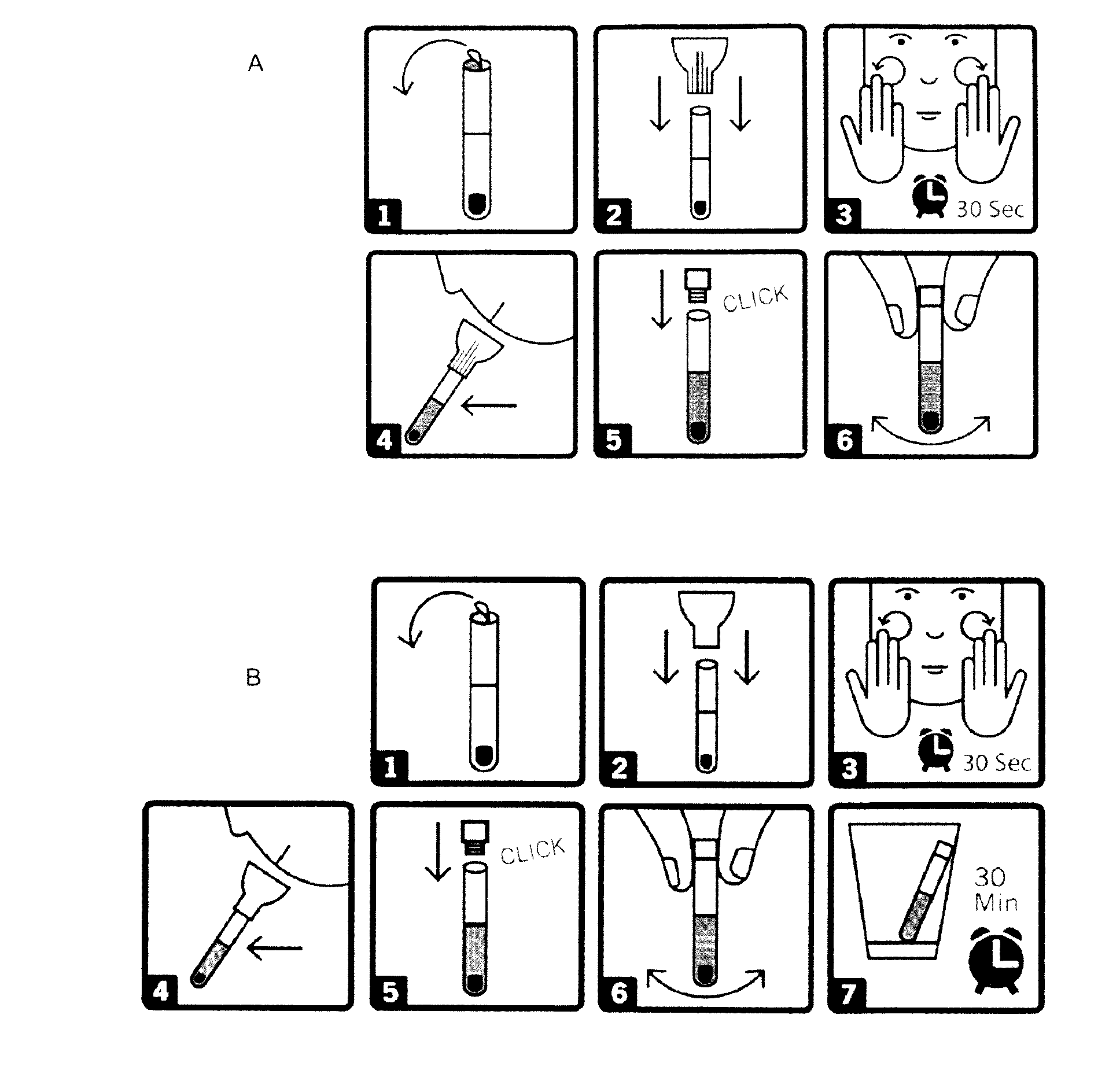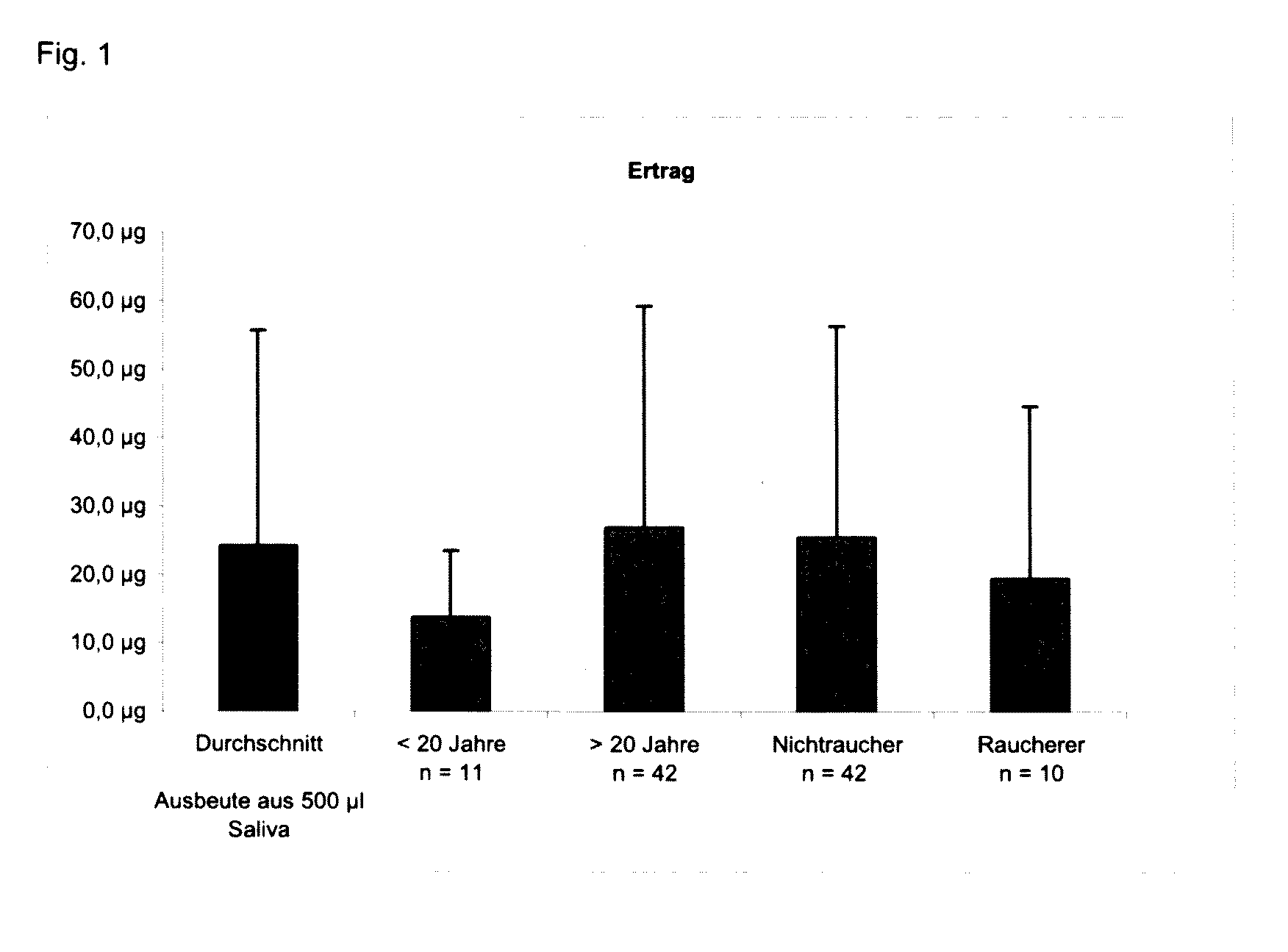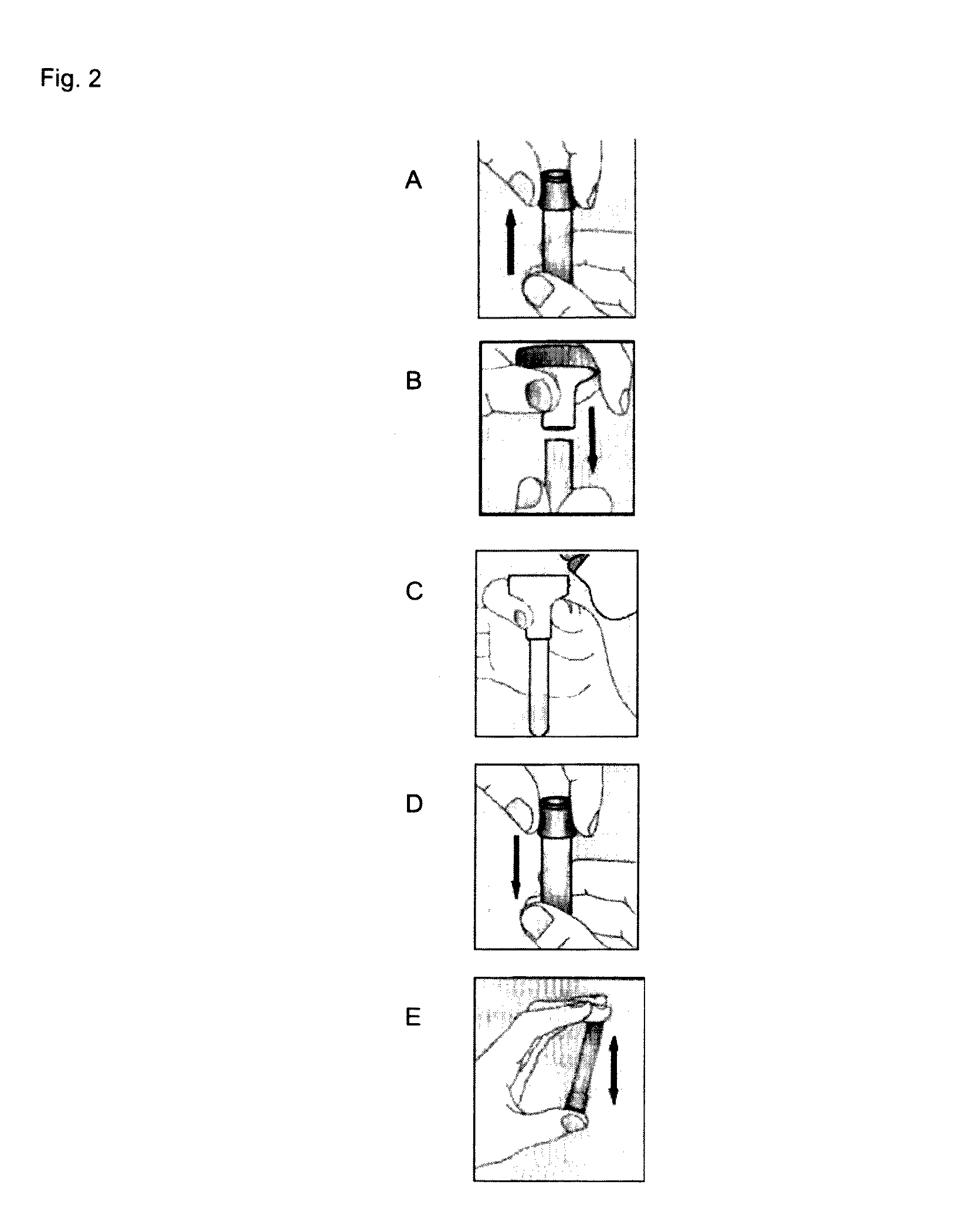System for the stabilization, conservation and storage of nucleic acid
a nucleic acid and conservation technology, applied in the field of systems for the stabilization, conservation and storage of nucleic acids, can solve the problems of unfavorable conditions in forensics, unfavorable conditions, and large impact, and achieve the effect of easy and fast removal from the tub
- Summary
- Abstract
- Description
- Claims
- Application Information
AI Technical Summary
Benefits of technology
Problems solved by technology
Method used
Image
Examples
example 1
[0097]Prepare stabilization mixture[0098]Freeze-dry stabilization mixture; only in this way is a consistency achieved that dissolves in a bodily fluid, for example sputum[0099]Place sputum into the test tube on the freeze-dried mixture[0100]Sputum dissolves freeze-dried mixture[0101]DNA is storage-stable at room temperature, preferably 15-30° C., particularly for 12 months.[0102]DNA purification according to the prior art
[0103]FIG. 1 shows the yield of an analysis performed with a preferred system. Lysis stabilization mixture was prepared according to Example 1 and filled into a tube (e.g., 1.5 ml each). Freeze-drying was performed for 24 hours in appropriate equipment. After test subjects deposited sputum samples into the tubes, they were stabilized for 6 months and then isolated according to the following procedure:
[0104]500 μl stabilized specimen is laced with 20 μl proteinase K 30 mg / ml and incubated at 50° C. for 10 min. 200 μl binding buffer B6 (Stratec Molecular) is added. Th...
example 2
[0108]Prepare stabilization mixture[0109]Freeze-dry stabilization mixture; only in this way is a consistency achieved that dissolves in a bodily fluid, for example blood[0110]Place EDTA blood into the test tube on the freeze-dried mixture[0111]Blood dissolves freeze-dried mixture[0112]DNA is storage-stable at room temperature, preferably 15-30° C., particularly for 7 weeks[0113]DNA purification according to the prior art
[0114]FIG. 5 shows the stabilization of DNA from blood. It is evident that, using the system, a high DNA concentration in blood can be stabilized, stored and conserved. The DNA can be isolated using the purification methods described in the prior art, wherein it is possible to stabilize the DNA with the system for a long period of time and to store and conserve it.
[0115]FIG. 6 shows a gel analysis of blood samples treated directly with the system without storage after DNA isolation. The following specimens were applied to a 0.8% agarose gel: 4 specimens, 10 μl specim...
example 3
[0117]Prepare tube with stabilization mixture[0118]Place sputum in the test tube on the buffer[0119]Mix the sputum with the buffer[0120]DNA is storage-stable at room temperature, preferably 15-30° C., particularly for 12 months.[0121]DNA purification according to the prior art
[0122]500 μl stabilized specimen is laced with 20 μl proteinase K 30 mg / ml and incubated at 50° C. for 10 min. 200 μl binding buffer B6 (Stratec Molecular) is added. The mixture is placed on a “spin filter” DNA binding filter (Stratec Molecular), followed by centrifugation at 10,000 g for 1 min. 500 μl wash buffer 1 (Stratec Molecular) is placed on the spin filter, followed by centrifugation at 10,000 g for 1 min. 600 μl wash buffer 2 (Stratec Molecular) is added to the spin filter, followed by centrifugation at 10,000 g for 1 min. 600 μl wash buffer 1 (Stratec Molecular) is placed on the spin filter, followed by centrifugation at 10,000 g for 1 min. Then dry centrifugation is performed at 10,000 g for 5 min. 1...
PUM
| Property | Measurement | Unit |
|---|---|---|
| volume | aaaaa | aaaaa |
| time | aaaaa | aaaaa |
| time | aaaaa | aaaaa |
Abstract
Description
Claims
Application Information
 Login to View More
Login to View More - R&D
- Intellectual Property
- Life Sciences
- Materials
- Tech Scout
- Unparalleled Data Quality
- Higher Quality Content
- 60% Fewer Hallucinations
Browse by: Latest US Patents, China's latest patents, Technical Efficacy Thesaurus, Application Domain, Technology Topic, Popular Technical Reports.
© 2025 PatSnap. All rights reserved.Legal|Privacy policy|Modern Slavery Act Transparency Statement|Sitemap|About US| Contact US: help@patsnap.com



